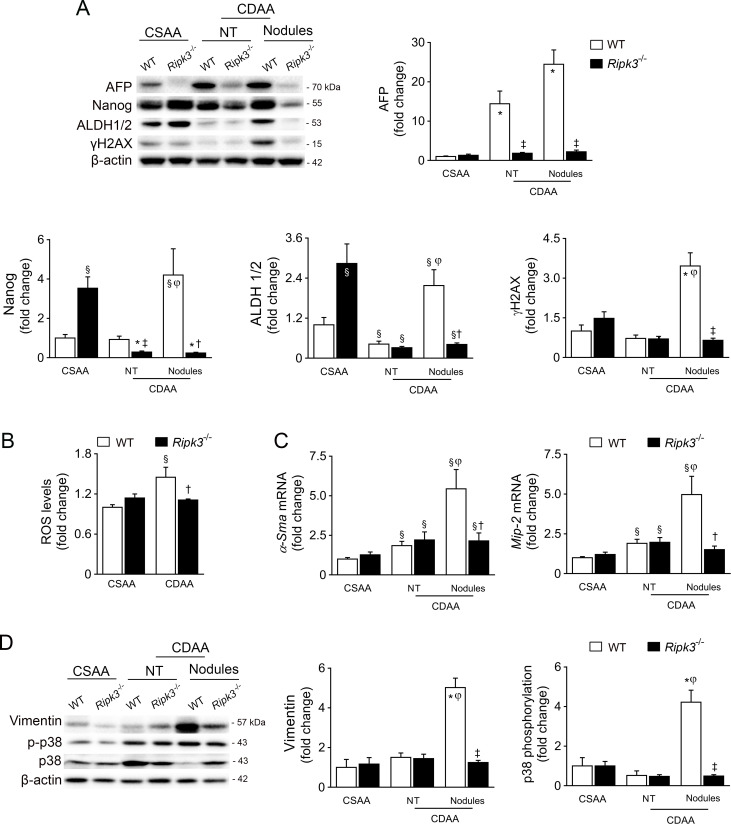Figure 5.
Receptor-interacting protein kinase 3 (RIPK3) deficiency impacts on oxidative damage and signalling pathways interactions associated with cancer phenotypes. C57BL/6 wild-type (WT) or Ripk3−/ − mice were fed a choline-deficient L-amino acid (CDAA) or an isocaloric control choline-sufficient L-amino acid (CSAA) diet for 66 weeks. (A) Immunoblotting and densitometry of α-fetoprotein (AFP), Nanog, aldehyde dehydrogenase 1/2 (ALDH) and γH2AX in mouse liver. Blots were normalised to endogenous β-actin. Representative immunoblots are shown. (B) Fluorescence intensity from whole cells lysates stained with the fluorescence probe H2DCFDA. Values were normalised with total protein levels. (C) Quantitative RT-PCR analysis of α-smooth muscle actin (α-Sma) and macrophage inflammatory protein 2 (Mip-2) in mouse liver. (D) Immunoblotting and densitometry of vimentin, p-p38 and p38. Blots of vimentin were normalised to endogenous β-actin, whereas p-p38 was normalised to p38. Representative immunoblots are shown. Results are expressed as mean±SEM fold change of six to seven individual mice. NT, non-tumorous tissue (tissue without macroscopic discernible nodules). §P<0.05 and *p<0.01 from CSAA-fed WT mice; †p<0.05 from and ‡p<0.01 from CDAA-fed WT mice. φP<0.01 from non-tumour tissue of CDAA WT mice. ROS, reactive oxygen species.

